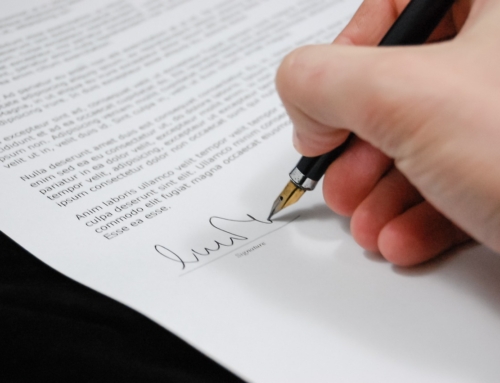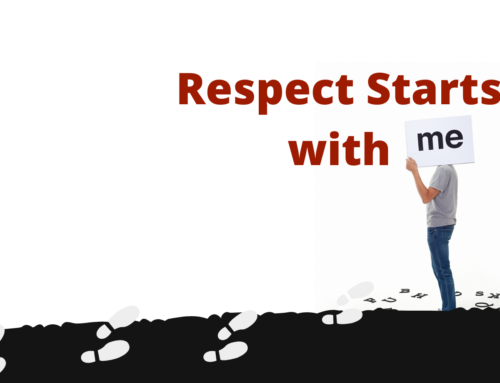What is Civility or Civil Behavior at Work?
Civility encompasses more than just good manners and etiquette.
Benjamin Franklin once said
“Be civil to all, sociable to many, familiar with a few, friend to one, an enemy to none.”
What do you think about when you think of civility or civil behavior?
Civility includes the behaviors that help preserve the norms for mutual respect in the workplace (or any community). Civility demands that one speaks in ways that are respectful, responsible, and restrained. We avoid that behavior which is offensive, rude, demeaning, and threatening.
Civility is usually demonstrated through manners, courtesy, politeness, and a general awareness of the rights, wishes, concerns, and feelings of others.
We often use the analogy of thinking about our place of work as a neighborhood and therefore your colleagues who work alongside you become analogist to your neighbours who live next door down the street. With that in mind, when we talk about civility or respect in the workplace, we try to think of that behavior in the context of a physical neighborhood.
Recipe for Civility
If I presented you with three recipe cards, and asked you to describe on each card a behavior which reflected civil or positive neighborhood behaviors, what would you write down?
Here are some recent suggestions:
Going out of your way to help someone
Acknowledging your mistakes and making appropriate amendments
Saying please and thank you
Using a positive tone of voice
Filling the copier with paper after using the last piece
Washing up your dirty cups and dishes and putting them away in the staff kitchen
Apologizing when you do something that offends someone else
Refusing to participate in office gossip
Showing respect for other people’s feelings and opinions
What Constitutes “Un-Civil” Behavior?
When we examine the other side of the same coin, I also want to know from that same group of workshop participants, how they would describe behaviors that negatively impacted the workplace.
Since the definition of “incivility” encompasses ‘low-intensity deviant behavior with ambiguous intent to harm the target,’ the descriptions of behaviors that people share include:
Failing to return phone calls, voicemails, emails
“Humorous” put-downs, eye-rolling, heavy sarcasm, derogatory remarks
Not keeping appointments
Interrupting conversations or meetings
Yelling, phone slamming, fist pounding, throwing things
Chipping away at someone’s self-esteem
Ignoring others and their opinions
Addressing people in an unprofessional manner
When you look at this list, it may seem at first glance that these could well be the behaviors of someone just having a bad day, and perhaps they are. However, if these behaviors showed up on a regular basis the costs of workplace incivility can be significant.
The Price of Decreased Civility
A decrease in creativity, a decrease in morale, as well as time spent mending the damages and workplace relationships to name just a few. Individuals reactions to incivility very but researchers Christine Porath and Pearson found that those who experience incivility on a regular basis have:
• 48% – intentionally decrease their work effort
• 47% – intentionally decrease the time spent at work
• 38% – intentionally decrease the quality of their work
• 80% – lost work time worrying about the incident
• 63% – lost work time avoiding the person responsible for the behavior
• 66% – said their performance declined
• 78% – said their commitment to the organization declined
• 12% – said they left that job because of the uncivil treatment and
• 25% – admitted to taking their frustration out on customers and others in the workplace
A lot has to do with how we individually perceive the incivility and our appraisal of the behavior determines whether the behavior breaks the norms of the workplace and actually becomes uncivil in the first place.
How to Cope with a Lack of Civility in Your Workplace
Is the behavior offensive, annoying, embarrassing, frustrating, disturbing or threatening?
Part of the impact on us as individuals revolves around our coping strategies in dealing with it when it occurs.
1. Conflict avoidance: Do you try to avoid or stay away from the person or just put up with it? Do try not to break the person angry or try not to hurt the person’s feelings?
2. Minimization: Do you tell yourself what the person said or did wasn’t important? Do you just try to forget it or ignore it or assume the person meant no harm or may actually have meant well?
3. Assertion: Do you confront the person? Do you ask tell the person to leave you alone and to let the person know that you didn’t like what they said or what they did?
Asking for Help
4. Informal social support seeking: Do you talk with a friend or someone for advice or support? Do you talk about the situation with someone you trust or maybe talk with her family member for understanding and support?
5. Informal organizational support seeking: Do you talk with a supervisor or someone in management or perhaps even report the situation informally using the process outlined within your organization’s respectful workplace policy?
6. Formal organizational support seeking: Do you make a formal complaint?
How to Enhance Civility in the Workplace
Every organization has a responsibility to develop a system where incivility is prevented to the largest extent possible and uncivil conduct is taken seriously despite the fact that the behavior might be viewed as minor.
We have some ideas for enhancing civility within your workplace.
1. Have a good role model for demonstrating good manners. Have people in supervisory managerial and leadership positions always demonstrate polite and encouraging behavior since everyone else(hopefully) will likely follow in their footsteps.
2. Teach civility to everyone in the workplace. Offer training on good manners and ways to show respect to colleagues.
3. Have zero tolerance expectations for abrasive behaviors in the workplace. Make sure people take action rather than walking by the standard and therefore demonstrating acceptance of it.
4. Teach employees how to self monitor their own behavior. Employees need to know what their triggers are and how to control their impulses and responses when they get triggered themselves.
5. Examine the conflict management styles of employees and managers and teach them the importance of openly discussing issues.
6. Encourage employees to consider the impact of their words and actions on others before they act. Too often, emails or text messages are sent out without someone really considering the impact of what will happen when it arrives at the other end. This sometimes only serves to escalate the situation.
7. Help employees accept responsibility for their actions and the consequences of those actions.
8. Ask for feedback to learn how you were coming across to others and then listen to the feedback and take action to improve.
A few years ago, the University of Tennessee wanted to send a message to everyone within their organization about the importance of civility and respect. They decided to do so by distributing and sharing the following video. I think that it sums up the message really well…






